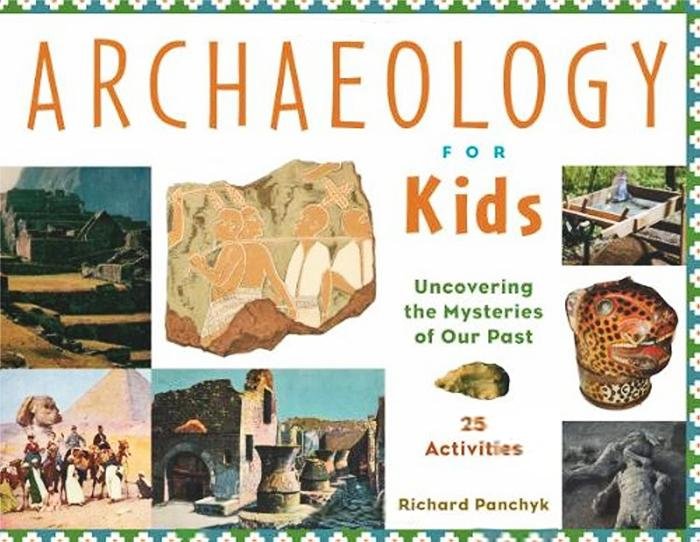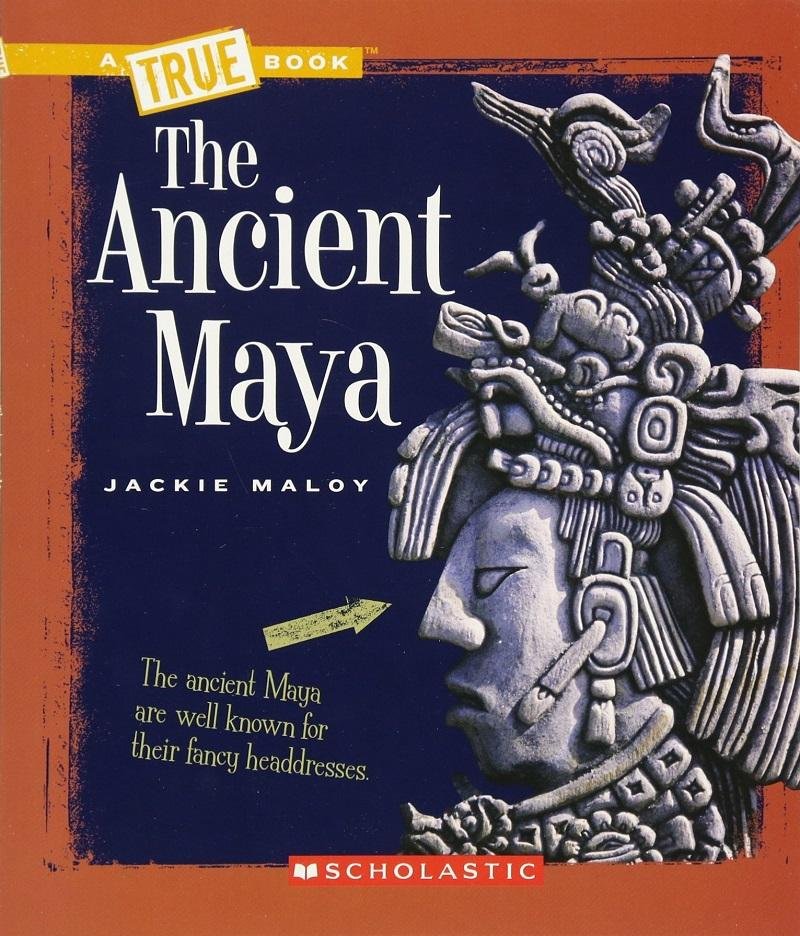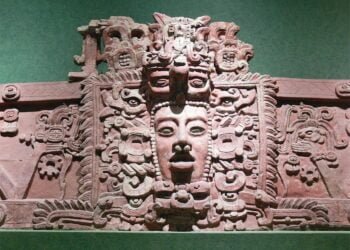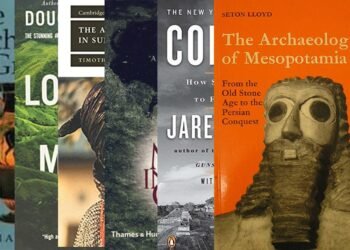Here are 10 of the best children’s archaeology books that are engaging and educational:
 “Archaeologists Dig for Clues” by Kate Duke
“Archaeologists Dig for Clues” by Kate Duke
This book introduces young readers to the exciting world of archaeology, following a group of archaeologists as they uncover artifacts and piece together the past. In this beautifully illustrated picture book, learn about the objectives of archaeologists, their methods of discovery, and the intriguing insights gained from their findings.
Kate Duke presents an engaging overview of archaeology, providing all the essential information for embarking on your own dig. Perfect for early elementary-age children, both in educational settings and at home, this book combines clear explanations with vibrant imagery.
Join Sophie, an archaeologist, as she leads three curious children, along with a dog and a cat, on an exciting excavation. Sophie enthusiastically explains the scientific process, while the children, always mentioned together, ask thought-provoking questions in humorous conversations.
The book also offers amusing discussions about ancient and modern garbage. Additionally, it features the intriguing reconstruction of animal bones discovered during the dig, conducted in a laboratory.
 “National Geographic Kids Everything Ancient Egypt” by Crispin Boyer
“National Geographic Kids Everything Ancient Egypt” by Crispin Boyer
Join children on an incredible exploration of ancient Egypt in this captivating book, where they will delve into the wonders of pyramids, pharaohs, and the daily existence of this ancient civilization.
Bursting with vibrant photographs and intriguing information, the book uncovers the grandeur and resilience of the Egyptians’ monumental achievements, which have persevered for over five millennia, despite challenges from tomb raiders and the relentless passage of time. By studying pyramids and mummies, we gain insights into their beliefs surrounding death.
“Everything Ancient Egypt” is a comprehensive resource that satisfies children’s curiosity about the enigmatic world of ancient Egypt, offering both peculiar and captivating facts.
The book is divided into sections such as “Rise of the Pharaohs,” “Death and the Afterlife,” “Life in Ancient Egypt,” and “Fun With Ancient Egypt.” Alongside the enthralling content, stunning photographs and an interactive glossary enrich this exciting addition to the series, providing an engaging and immersive experience for young readers.
 “You Wouldn’t Want to Be an Egyptian Mummy!” by David Stewart
“You Wouldn’t Want to Be an Egyptian Mummy!” by David Stewart
This amusing book presents a fresh perspective on ancient Egypt by immersing children in the experiences of an Egyptian mummy.
It offers an engaging and informative exploration of the mummification process. This interactive series captivates young readers (ages 8-12) who may be hesitant or less inclined to read, as it actively involves them in the narrative.
It encourages readers to become the main character and employs humorous illustrations to depict the occasionally grim and horrifying aspects of life during significant historical periods. In ancient Egypt, the wealthy understood that death did not signify the end; instead, their bodies needed to be prepared for the afterlife. However, this undertaking was quite repulsive, and there was no guarantee of receiving constant respect throughout the process.
 “Archaeology for Kids: Uncovering the Mysteries of Our Past” by Richard Panchyk
“Archaeology for Kids: Uncovering the Mysteries of Our Past” by Richard Panchyk
This book provides a comprehensive introduction to the field of archaeology, covering various subjects such as ancient civilizations, archaeological methods, and the significance of preserving cultural heritage. It offers a range of projects and activities that cater to young aspiring archaeologists.
Within this activity book, children will find 25 projects that allow them to engage in hands-on experiences, such as conducting surface surveys of archaeological sites, constructing screens for sifting dirt and debris during excavations, determining the age of soil based on its color, and using tree rings to date archaeological finds.
These activities aim to teach children the techniques that led to the discoveries of significant sites like Neanderthal caves, Tutankhamun’s tomb, the city of Pompeii, and Tenochtitlan, the capital of the Aztec empire.
Children will take pleasure in crafting stone-age tools, participating in a seriation game using old photographs of cars, “interpreting” objects excavated from their own backyards, and using patent numbers to date modern artifacts. Through these activities, they will gain a broad understanding of human history and the scientific methods that breathe life into it.
 “The Ancient Maya” by Jackie Maloy
“The Ancient Maya” by Jackie Maloy
Delve into the world of the ancient Maya, discovering their agricultural practices, daily routines, and belief systems.
The True Book: Ancient Civilizations series offers readers the opportunity to delve into the unique characteristics and remarkable contributions of each ancient civilization, as well as their influence on modern practices.
This series provides an introduction suitable for children in grades 3-5, covering topics relevant to the curriculum, and offers a comprehensive resource section that fosters independent study.
Specifically, this book serves as an introduction to the fascinating ancient Maya civilization, providing insights into their cities, temples, and notable accomplishments. Engaging interactive elements, such as lift-the-flap features and quizzes, are incorporated to enhance the learning experience.
 “Pyramid” by David Macaulay
“Pyramid” by David Macaulay
David Macaulay, an award-winning author, and illustrator, provides a captivating and well-explained account of the construction and purpose of ancient Egyptian pyramids.
“Pyramid” serves as a valuable resource for readers seeking to expand their understanding of ancient Egyptian civilization, history, and architectural marvels.
In this book, Macaulay delves into the intricacies of constructing ancient Egyptian pyramids, starting from the initial planning phases to the techniques employed in raising the massive stones to the pyramid’s uppermost level.
Through detailed black-and-white illustrations and concise text, Macaulay also explores the philosophical aspects of life and death in ancient Egypt. Although primarily intended for middle-grade readers, anyone with an interest in the subject will appreciate this remarkable exploration of what many consider to be one of humanity’s most awe-inspiring creations.
 “Archaeology: Cool Women Who Dig” by Anita Yasuda
“Archaeology: Cool Women Who Dig” by Anita Yasuda
In the book “Archaeology: Cool Women Who Dig,” aimed at readers aged 9 to 12, archaeologists are depicted as individuals who search for clues to gain insights into past civilizations.
The book focuses on the experiences of three dynamic women currently working in the field. Chelsea Rose, a historical archaeologist at Southern Oregon University, Alexandra Jones, who runs Archaeology in the Community in Washington, DC, and Justine Benanty, a maritime archaeologist from New York City.
As part of the Girls in Science series by Nomad Press, this book aims to bridge the gap between girls’ interests and their potential futures by exploring science careers and highlighting successful women in the field.
By sharing compelling stories of real-life archaeologists, the book offers role models for readers to look up to. It incorporates engaging content, links to primary sources, and thought-provoking questions to ignite readers’ curiosity and inspire further exploration and study of archaeology.
The book delves into the history of archaeology, the pioneering women who contributed to field research, and the diverse career paths within this exciting and significant field. Both boys and girls are encouraged to discover their passion in the captivating realm of archaeology.
 “Ancient Rome (DK Eyewitness Books)” by Simon James
“Ancient Rome (DK Eyewitness Books)” by Simon James
In this captivating book, children are taken on a captivating journey through ancient Rome, where they can explore its impressive architecture, witness the excitement of gladiators, and gain insights into daily life during that time.
The book is visually striking, filled with detailed photographs accompanied by informative captions. It serves as a remarkable and glossy collection of engaging information about an ancient civilization.
Readers can explore various aspects of Roman life, including family dynamics, household items, cosmetics, sports, children’s clothing, and games. Each page offers a captivating visual spectacle, allowing for both chronological reading or casual browsing. The vibrant imagery encourage deep thinking about the lives of early Romans.
 “The Usborne Introduction to Archaeology” by Abigail Wheatley
“The Usborne Introduction to Archaeology” by Abigail Wheatley
This engaging book provides an interactive experience for children to learn about the analysis of human artifacts from the past. It offers hands-on activities and puzzles to actively involve readers in the learning process.
The book covers a range of archaeological subjects, such as excavation methods, dating techniques, and artifact analysis. It explains the types of materials archaeologists study and the methods they employ.
It showcases significant discoveries from different continents, providing illustrations and descriptions. Additionally, it includes a timeline and a glossary to enhance comprehension and expand vocabulary.
 “Digging Up Dinosaurs” by Aliki
“Digging Up Dinosaurs” by Aliki
Although not exclusively focused on archaeology, this book serves as an introduction for young readers to the process of excavating and studying dinosaur fossils.
It offers an intriguing glimpse into how scientists reconstruct the past by piecing together various clues. Renowned author and illustrator Aliki presents a simple and engaging text, complemented by vibrant artwork, which breathes life into these long-extinct creatures, captivating young dinosaur enthusiasts.
The book recounts the ancient era when dinosaurs dominated the Earth and subsequently vanished.
For thousands of years, the existence of these colossal beings remained unknown. However, people eventually discovered fossils—fossilized bones, teeth, and footprints that had transformed into stone.
This accessible and visually appealing science book is designed for early elementary-age children, suitable for both home and classroom settings.
These books provide a great introduction to the field of archaeology for children, fostering their curiosity about the past and the importance of preserving and understanding our shared history.





















